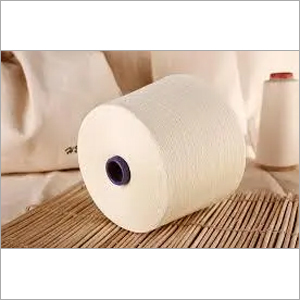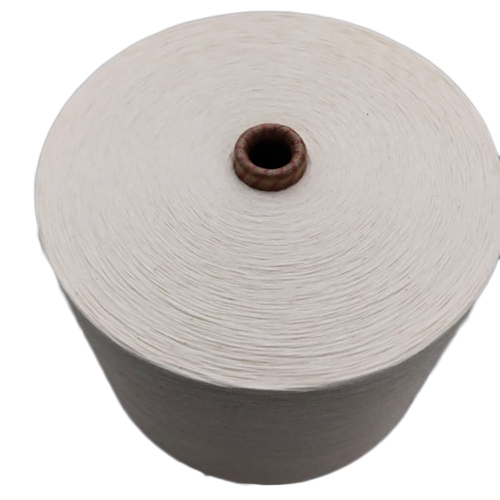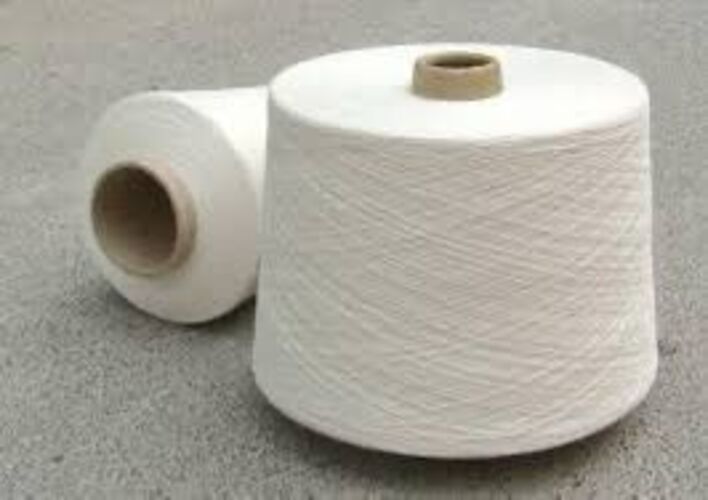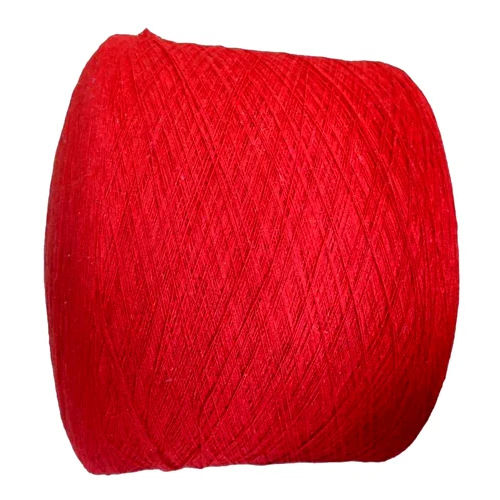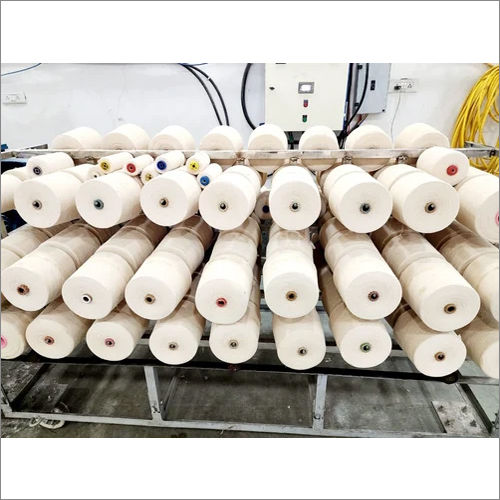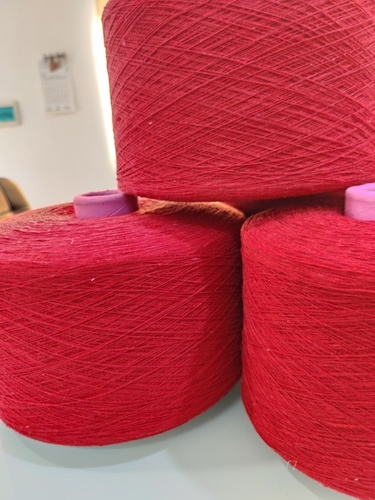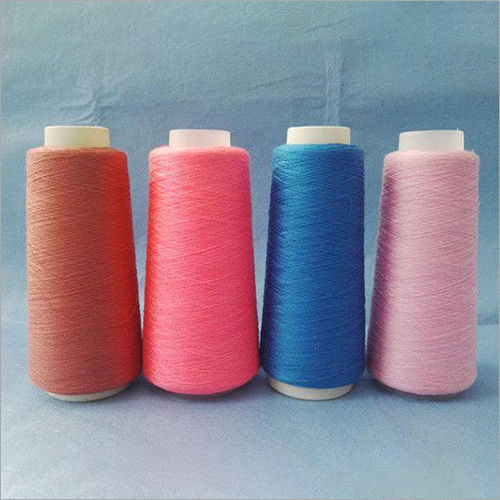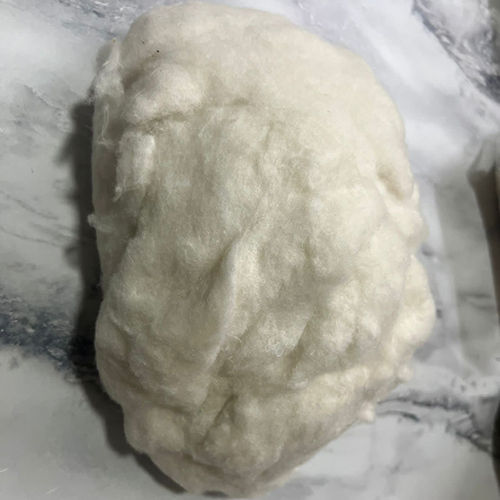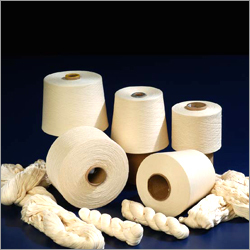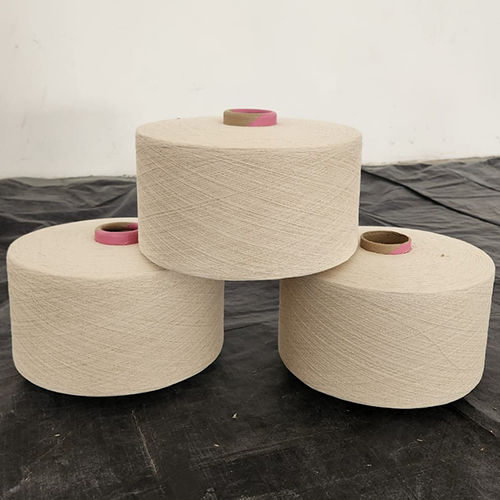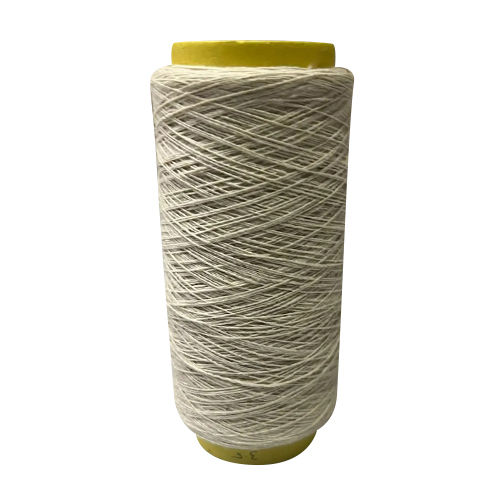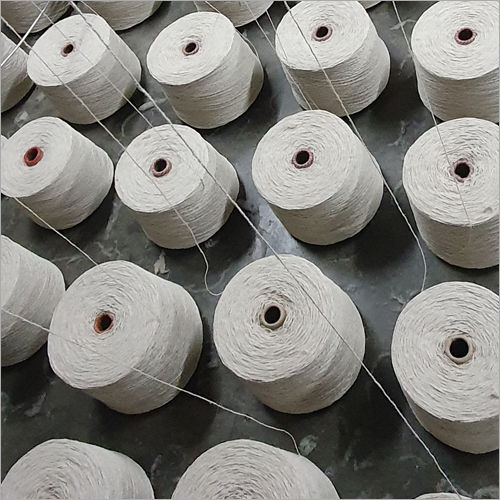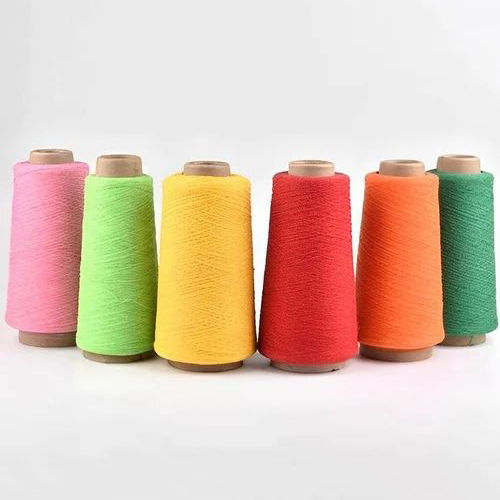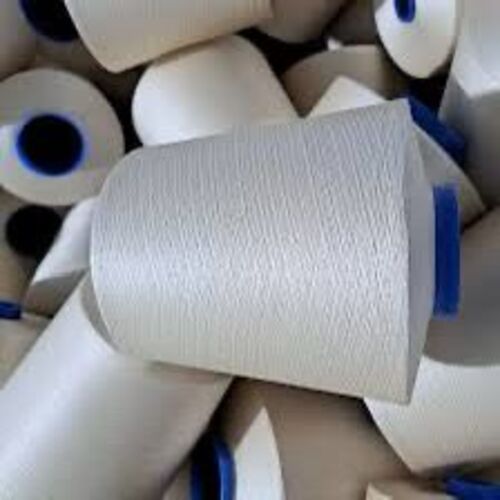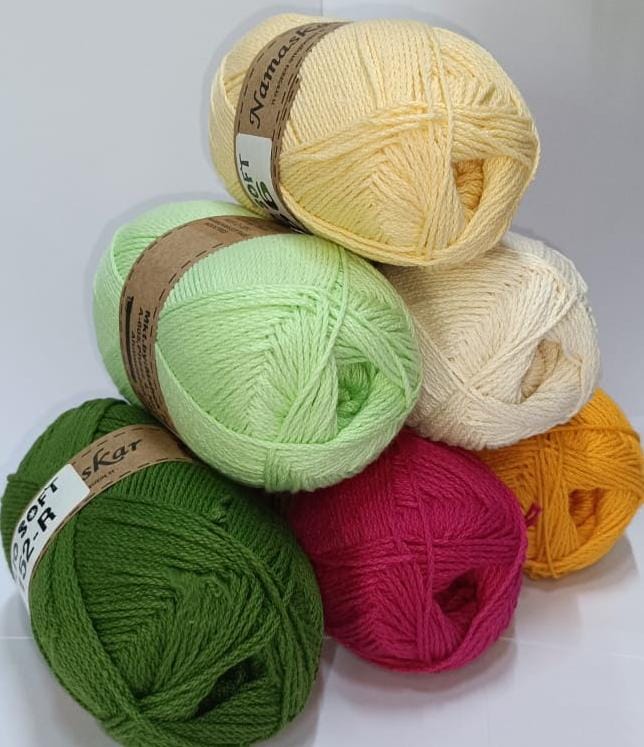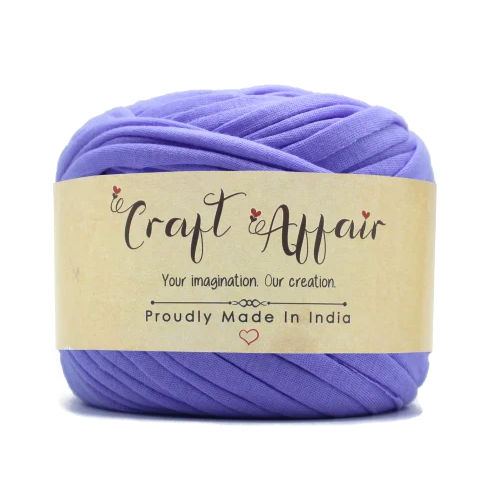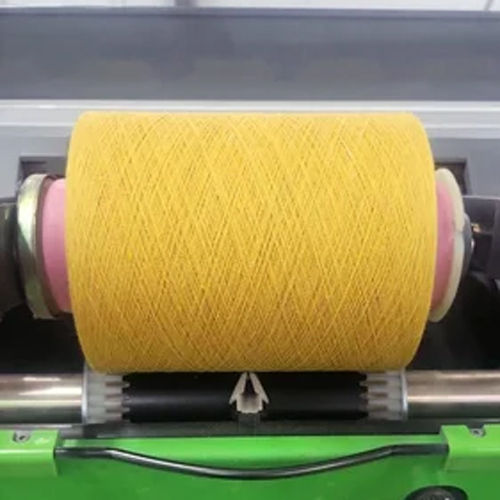Cotton Yarn
(5971 products)Durable Organic Cotton Yarns
2.80 USD ($) (Approx.)/Kilograms
MOQ1X40 FCL Kilograms/Kilograms
Material100% Cotton
CharacterSpun
PropertiesRaw
StyleYarn
UsageWeaving, Knitting, Sewing
AttributesWaxed, Moisture-Absorbent, Anti-Piling, Durable, Anti-Bacteria, Recycled, Color Fast
Recycled Cotton Yarn Open End White Golves Yarn Carpet Yarn Application: Knitting
Price Trend: USD0.95-USD1 USD ($)/Kilograms
MOQ500 Kilograms/Kilograms
Yarn MaterialBlend Cotton
Yarn CharacterDyed
Yarn Count1s to 30s
Colorwhite
ApplicationKnitting
Shanghai Vico Industrial Co., Ltd
Shanghai
 Trusted Seller
Trusted Seller14 Years
100% Karded Cotton Yarn Application: Knitting
Price: 260 INR/Kilograms
MOQ80 Ton/Tons
Yarn Material100%Cotton
ApplicationKnitting
AttributesWashable
Janshakti Textile Mills Limited
Ahilyanagar
Combed Cotton Yarn - Attributes: Light In Weight
Price: 2.5 USD ($)/Piece
MOQ500 Piece/Pieces
Usage & ApplicationsIndustrial
Fabric TypeCotton Printed Fabric
MaterialCotton
Yarn Material100%Cotton
Yarn CharacterPlain
Yarn StyleFancy Yarn
Black Organic Pure Cotton Yarn
Payment TermsDelivery Point (DP), Days after Acceptance (DA), Cheque
Main Export Market(s)Asia
Main Domestic MarketAll India
Tropxe Distribution Solutions (opc) Pvt. Ltd.
Bengaluru
VKV Cotton Yarn
Payment TermsCheque
Sample AvailableYes
Main Export Market(s)Western Europe, Asia
Cotton Double Yarn Application: Knitting
Price Trend: 72.00 - 120.00 INR/Kilograms
MOQ2 Ton/Tons
Yarn Material100%Cotton
ApplicationKnitting
AttributesLight in Weight
10s Red Cotton Yarn from Gupta Fibres - 100% Cotton, Multiple Ply, Red Color, CSP 1350 Lea | Eco-Friendly, Light in Weight, Dyed Yarn for Weaving
Price: 105 INR/Kilograms
MOQ500 Kilograms/Kilograms
Yarn Material100%Cotton
Yarn CharacterDyed
ColorRed
ApplicationWeaving
AttributesLight in Weight
Steamed High Twist Cotton Yarn Z Twist Application: Weaving
MOQ1000 Piece/Pieces
Yarn Material100%Cotton
Yarn CharacterTwisted
Yarn StyleCore Spun Yarn
ColorLight Brown
ApplicationWeaving
AttributesLight in Weight, Durable, Washable, Quick Dry
Affordable Cotton Yarn
Product DescriptionWe manufacture cotton yarn in Surat, Gujarat, India with count 4 to 6 of different colours. The yarn is of high quality and made using top grade raw materials and technologies to make sure its best performances. In order to achieve maximum level of client satisfaction these Cotton Yarn are offered
Dhananjay Exim
Surat
 Trusted Seller
Trusted Seller4 Years
Red Cotton Yarn - 100% Cotton, Dyed, High Strength, Ideal for Stitching, Vibrant Red Color
Price: 105.0 INR/Bag
MOQ50 Bag/Bags
Yarn Material100%Cotton
Yarn CharacterDyed
StrengthHigh
ColorRed
ApplicationStitching
Global Textile Mills
Panipat
 Trusted Seller
Trusted Seller4 Years
Colored Cotton Yarn - Premium Quality, Hypoallergenic and Eco-Friendly Materials, Vibrant Color Selection
Product DescriptionColored Cotton Yarn
10S Grey Cotton Yarn - Color: White
MOQ1000 Kilograms/Kilograms
Material100% Cotton
PropertiesRaw
StyleNormal
ColorWhite
New Tiruppur Traders
Tirupur
 Trusted Seller
Trusted Seller2 Years
3 Ply Mercerized Cotton Hand Knitting Yarn - Attributes: Light In Weight
Price: 250.0 INR/Piece
MOQ6 Piece/Pieces
ColorPink
MaterialCotton
Usage & ApplicationsGarment Industries
StrengthHigh
AttributesLight in Weight
Cotton Gassed Mercerized Dyed Yarn On Cones (Ne 100x2)
Price Trend: 850.00 - 900.00 INR/Kilograms
MOQ500 KG Kilograms/Kilograms
FOB PortMUMBAI
Supply Ability15000 Per Month
Delivery Time30 Days
Off White Cotton Yarn - 100% Cotton, Light in Weight | Plain Texture for Versatile Stitching Applications
Price: 115 INR/Kilograms
MOQ1000 Kilograms/Kilograms
Yarn Material100%Cotton
Yarn CharacterPlain
ColorWhite
ApplicationStitching
AttributesLight in Weight
Pure Cotton Yarn Application: Stitching
MOQ100 Kilograms/Kilograms
Yarn Material100%Cotton
Yarn CharacterPlain
ColorWhite
ApplicationStitching
AttributesLight in Weight
4S Grey Cotton Polyster Yarn Application: Weaving
MOQ100 Kilograms/Kilograms
Yarn MaterialBlend Cotton
Yarn CharacterDyed
ColorGrey
ApplicationWeaving
AttributesEco-Friendly
White Cotton Yarn - Premium Quality, Soft Touch Fiber | Ideal for Knitting, Weaving, and Crafting Projects
Product DescriptionWhite Cotton Yarn
Shivam Handloom Industries
Panipat
 Trusted Seller
Trusted Seller6 Years
VICRAM - 100% Pure Cotton Yarn Roll | White, Machine Made for Embroidery, Garments, Weaving And Knitting
Yarn Material100%Cotton
Yarn CharacterPlain
ColorWhite
ApplicationKnitting
20S Recycled Yarn - Application: Knitting
MOQ100 Roll/Rolls
Yarn Material100%Cotton
Yarn CharacterPlain
ColorDifferent Available
ApplicationKnitting
AttributesLight in Weight
Carded Cotton Yarn - Durable, Smooth Texture | Versatile for Coarse and Medium Counts, Various Colors Available
Product Description\015\012 Our Carded Cotton Yarn contains a wide range of fiber length and has been carded with help of advanced techniques. It is considerably cheaper and is used in coarse and medium counts. Offered yarn is finish
Recycled And High Strength Ring Spun 3 Ply Dyed Cotton Yarns Application: Weaving
Price: 80 INR/Kilograms
MOQ625 Kilograms/Kilograms
Yarn MaterialPure Cotton
Yarn CharacterDyed
Yarn TypeOther, Dyed Cotton Yarns
StrengthHigh Strength
Yarn Count30'S
ColorMaroon
Organic Pure Cotton Yarn - Multiple Weights , High Strength and Softness
Payment TermsDelivery Point (DP), Days after Acceptance (DA), Cheque
Sample AvailableYes
Sample PolicyContact us for information regarding our sample policy
Cotton Yarns - Organic Cotton with GRS Certification | 5% to 50% Recycled Options, Customizable Natural Colors
Product DescriptionWe are the proficient manufacturers and suppliers of superior quality Cotton Yarns. Made by using quality organic cotton and certified for GRS from Control Union, these are widely appreciated for their intricate quality and natural colors. Moreover, we can provide from 5% to 50% recycled cotton yarn
Light In Weight Plain White Cotton Yarn
Yarn Material100%Cotton
Yarn StyleFancy Yarn
ColorWhite
AttributesLight in Weight, Washable, Durable
Dyed Cotton Yarns
Price: 320 INR/Kilograms
MOQ100 Kilograms/Kilograms
Washing MethodClean with Water
Usage & ApplicationsTextile Industry
Yarn Material100%Cotton
StrengthHigher
ColorAvailable in Many Different Colors
AttributesLight in Weight, Washable, Quick Dry, Eco-Friendly, Anti-Bacteria
500 N Strength Organic Eco-Friendly Soft Cotton Yarn - 100% Cotton, Green Color, Lightweight, Durable, Ideal for Knitting Sweaters and Warm Clothes
Price: 300 INR/Kilograms
MOQ200 Kilograms/Kilograms
Yarn Material100%Cotton
Yarn CharacterPlain
Yarn TypeOther
Strength500 N
ColorGreen
ApplicationKnitting
Latest From Cotton Yarn
Ready To Ship Cotton Yarn
What Is Cotton Yarn?
Uses & Benefits of Cotton Yarn
- Clothes have been woven together using yarn made of cotton for generations. And if you put that imagination to work for you, you'll have one of the high-income talents. This cellulose fibre is ideal for moving heat away from the body, which will allow you to maintain a more comfortable temperature. Knitting with cotton yarn has a number of benefits, some of which are listed below:
- Cotton yarn is much superior in terms of breathability and overall wearability.
- Due to its lack of flexibility, cotton yarn is a good material to use when going for a traditional drape look. Because it falls into a relaxed posture on its own, it is an excellent choice for draped items such as scarves, purses, and clothes.
- Your woven fabric will have a much better stitch definition as a result. Cotton is a wonderful choice for knitting since it highlights even the smallest of details in your stitches.
- Cotton yarn results in a fabric that is sturdy and natural, and it is very easy to care for since it can be machine washed and dried. In point of fact, it acquires a softer texture with each washing.
- This yarn results in a fabric that is very good at absorbing water. As a direct consequence of this, you will have no trouble dying this cloth in a broad range of colours, and it will retain the colour well.
- Even though it is tough and long lasting, it is pleasant to wear. Cotton yarn is suitable for knitting tasks that need a high degree of durability due to the resilience of its fibres, which resist breaking and tangling.
- Cotton yarn is available at a lower price point than wool yarn. When purchasing cotton that is treated and of a higher grade, however, you may notice a tiny rise in price.
- This yarn is made from plants and is the healthiest option for vegans. A cotton is an excellent option for vegan knitters since wool is derived from animals and most vegans do not like knitting with this material.
Types Of Cotton Yarn
Best Quality Cotton Yarn
- Arvind Mill
- Alok Industries Ltd
- KPR Mill
- Vardhman Textile
- Nahar Spinning
- JBF Industries
- Trident
- Welspun India Ltd
- SRF
- SEL Group
Manufacturers & Suppliers of Cotton Yarn
Company Name | Member Since |
|---|---|
Purushotam Dass Niranjan Lal Delhi, India | 18 Years |
Shanghai Vico Industrial Co., Ltd Shanghai, China | 14 Years |
Sehyog Enterprises Ludhiana, India | 6 Years |
Shivam Handloom Industries Panipat, India | 6 Years |
Tropxe Distribution Solutions (Opc) Pvt. Ltd. Bengaluru, India | 5 Years |
Rewatex Bhiwandi, India | 5 Years |
Shree Ram Textiles Panipat, India | 4 Years |
Dhananjay Exim Surat, India | 4 Years |
Global Textile Mills Panipat, India | 4 Years |
Harsh Textiles Panipat, India | 4 Years |
Popular Products


